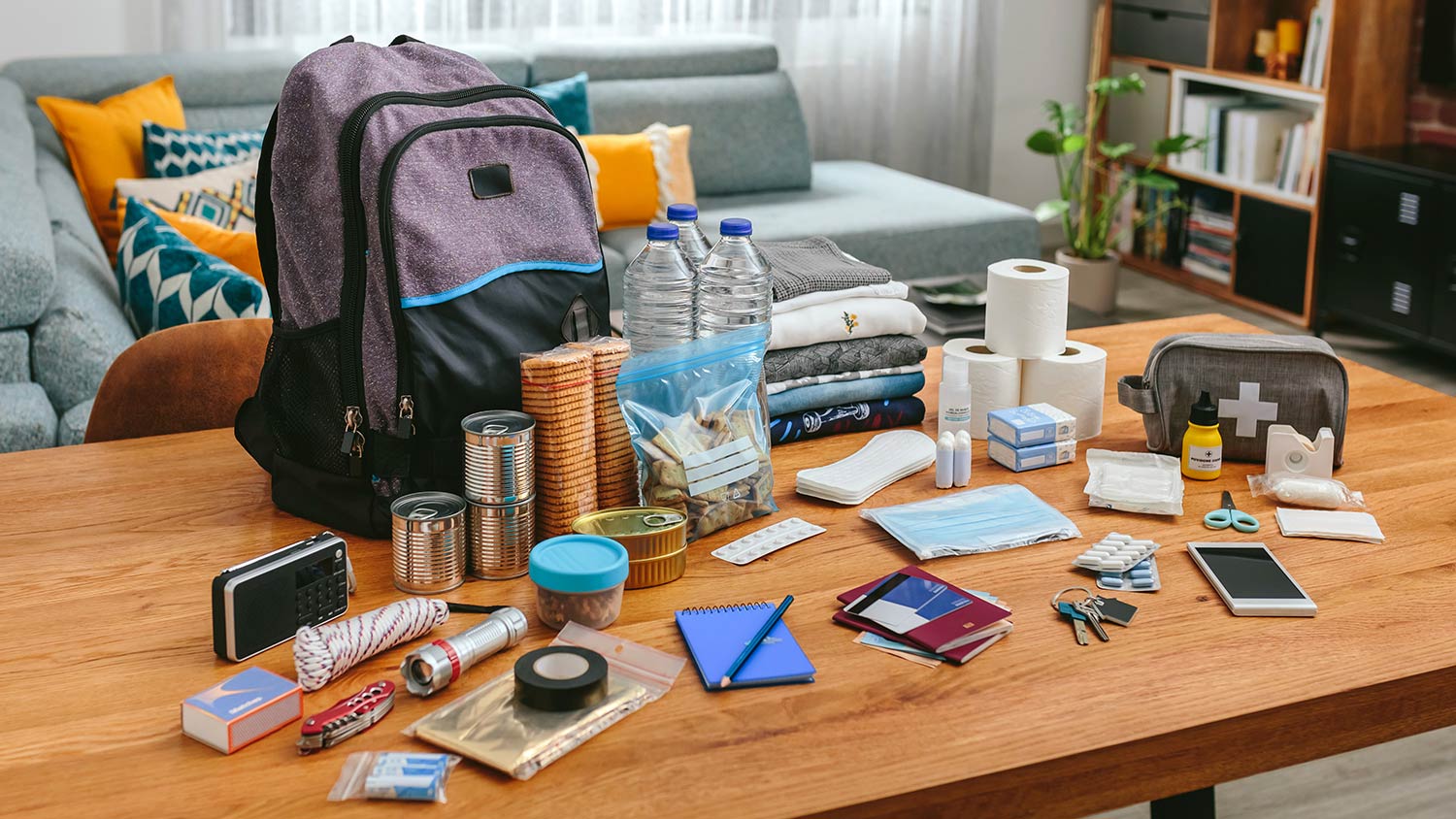
Discover the average professional organizer cost, what influences pricing, and how to budget for your next home organization project.
From gathering supplies to coming up with an emergency plan, here's how to prepare for a natural disaster


When disaster strikes, we rarely are given any time to prepare. That’s why it’s crucial to have a plan in place well in advance so that you and your family can respond appropriately. Natural disasters can leave you without water and power for days, and you may not be able to get the supplies you need from grocery and hardware stores. That’s why it’s essential to have some basic supplies on hand for when a natural disaster occurs.
Read ahead to learn how to create an emergency plan, build a kit with our handy emergency supply kit checklist and properly prepare your home.
Understand the types of disasters that affect your area and discuss how you would like to prepare and respond with your family. Know where to go in your home when a tornado, hurricane, or earthquake strikes. Think about how to react during a virus outbreak, where you might have to hunker down for more extended periods in your home (although chances are you’ve been dealing with plenty of that since 2020). And assign responsibilities to family members and write down your plan so everyone can easily reference it.
Topics to discuss when making your plan:
How to communicate when disaster strikes
How to prepare your home
Where to shelter during various emergencies
An emergency escape plan from your home
An evacuation route from your town
An emergency preparedness kit
The specific needs of those in your household (children, pets, people with special needs)
Stockpile these necessities to help ensure that you and your family have what you need for sheltering in your home during severe weather emergencies or a virus outbreak. When a natural disaster occurs, it may take emergency crews several days to respond, so you should plan on being self-sufficient for a while.
Water: 1 gallon of water per day per person (or pet) for hydration and sanitation. Buy 3 days’ worth for an evacuation and 2 weeks’ worth for sheltering at home.
Food: Non-perishable food to feed your household. Buy 3 days’ worth for evacuation and 2 weeks’ worth for sheltering at home.
Battery-powered or hand-crank radio, or an NOAA Weather Radio
Flashlight and lantern with extra batteries
First aid kit stocked with antiseptic, gloves, bandages, antibiotic ointment, hydrocortisone ointment, over-the-counter pain relievers, thermometer, scissors, and tweezers
Whistle to signal for help
Dust masks to filter contaminated air
Plastic sheets and duct tape to seal off doors, windows, and air vents if outside air is contaminated
Moist towelettes, garbage bags, and plastic ties
Wrench, pliers, or a multi-purpose tool to turn off utilities
Road maps of the area
Manual can opener
Cell phone with charger and backup batteries
Two-way radio
Masks
Soap
Hand sanitizer
Disinfectant wipes
Liquid bleach
Toothpaste and toothbrushes
Prescription medications (7-day supply)
Glasses and contact lenses
Hearing aids
Feminine hygiene products
Infant supplies like formula, baby food, bottles, diapers, wipes, and diaper cream
Pet supplies like food, water, litter, and medications
Cash
Important documents such as photo IDs, Social Security cards, birth records, health insurance, and prescription cards, saved electronically or stored in a waterproof container.
Sleeping bags or blankets
A change of clothing and sturdy shoes for each person
Fire extinguisher
Matches and lighters
Paper plates and cups, plastic utensils, and paper towels for meals
Paper and pencil
Activities, like books and puzzles, for children
Car repair items such as a spare tire, tire patch kit, and oil
Fire extinguisher
Work gloves
Emergency escape ladder

Creating an emergency kit as part of your disaster preparedness checklist is one thing, but keeping it up-to-date is another. You’ll need to check it regularly—consider setting a calendar reminder for every few months—to make sure your kit is good to go.
Keep your kit in a cool, dry place. Store your survival goods where all family members can easily access them.
Store food in secure, sealed containers.
Update your kits regularly, checking expiration dates on food and adding items for family members as their needs change.
If you may be sheltering in place during a natural disaster, familiarize yourself with where your utility shut-offs are located and how to turn them off.
Natural gas: Natural gas leaks can cause fires after disasters, so it’s essential to know how to shut off your gas. Call your gas company, and they can walk you through the proper way to turn off your gas meter. If you turn the gas off yourself, only a professional can turn it back on.
Water: Locate the main water line shut off in your home and make sure that everyone in your family knows where it is and how to turn it off.
Electricity: Electricity can spark natural gas fires if you have a gas leak. Locate your circuit box and shut off all individual circuits individually before shutting off the main circuit.
After you’ve made sure your loved ones are safe, sound, and secure, you’ll want to assess any damages to your home when it’s safe to do so.
Retrieve your important documents if you haven’t done so already to keep them in your emergency kit.
Retrieve valuable items to keep them in a storage unit or to send to a friend or family member outside of your area.
Take photos of any damages to your home if it’s still standing. Homeowners insurance can vary for natural disasters, so make sure to document everything.
Make sure to save all receipts when hiring pros to make repairs to your home.

From average costs to expert advice, get all the answers you need to get your job done.

Discover the average professional organizer cost, what influences pricing, and how to budget for your next home organization project.

These kitchen drawer organization tips will reduce time spent rifling through the kitchen looking for what you need. Learn how to organize your kitchen.

If your home is a bit messy, that’s perfectly normal. Trusting a professional home organizer to revamp your space can be worth the cost. Here’s how to find and hire a professional organizer.

Discover small closet organization tips to maximize space, reduce clutter, and create a stylish, functional storage area that suits your needs.

Declutter and maximize your space with these eight smart storage tips for messy closets, cupboards, and drawers around your home.

Maximize space and reduce clutter with these smart laundry room organization tips that boost function and even your home’s resale appeal.